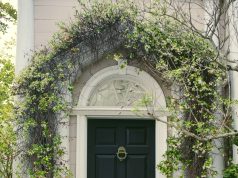
We live in a world where utility and energy are indispensable from our daily lives. Nevertheless, if we have a close look at these utilities and energy usages, we would be able to see that their usage is intricately imbibed with architecture and urban design. For example, the bulbs that we use are generally placed in holders either inside a building or on a street for lighting up a space so that humans use them. Both these areas are products of architectural or urban design.
Architecture and Utilities
Many believe that architecture is designing fancy buildings and enhancing the beauty of urban space. This however is not the case. Architecture is a way of expression that is manifested in building and urban space design so that the harmony between natural and man-made objects.
While this was the artistic thought behind the values of architecture and urban design, the construction part has various segregations so that the project gets completed without any hassles.
One of the major areas in architectural construction is the provision for utilities and energy requirements of the buildings. This part includes liaising with the government and the service providers to install the various equipment and fixtures so that the required utility and energy services can be easily provisioning the newly designed buildings. Therefore, it can be easily said that architecture and utilities are two sides of the same coin.
Using Architecture for Sustainability
The term sustainability is often misused and is thought of only for cost-saving purposes. This is not the case. Cost-saving can be easily achieved with just a click on the internet. Many websites like the Utility Bidder provide lucrative choices to have a cheaper option for the utility and energy services. Sustainability has a greater impact as it includes the fact about environmental sustenance.
To build an energy conservative building, the first step is to understand the energy and utility requirements. The heaviest requirements for energy and utility are light, heating, or cooling (depending on the climate where the building is designed), and the water requirements. If these major requirements were addressed, then a lion’s share of the problem would be solved.
Taking the example of light, strategically placed windows and skylights practically solve the lighting requirements entirely for the day. As for the nighttime requirements, provisioning areas for solar panels in the building would solve the problem of lights for the night as well.
Both heating and cooling are heavily dependent on the materials and methods of construction. Using insulating materials like wood, glass, etc. would solve the heating problem, and using cross-ventilation methods would lessen the cooling issues.
While light, heating, and cooling are typically energy elements, water conservation is an important part of sustainable architecture as well. One of the primary examples of water conservation is harvesting rainwater. The rain that falls on the roof is collected in an underground reservoir for future use in the building forms the primary concept of rainwater harvesting.













